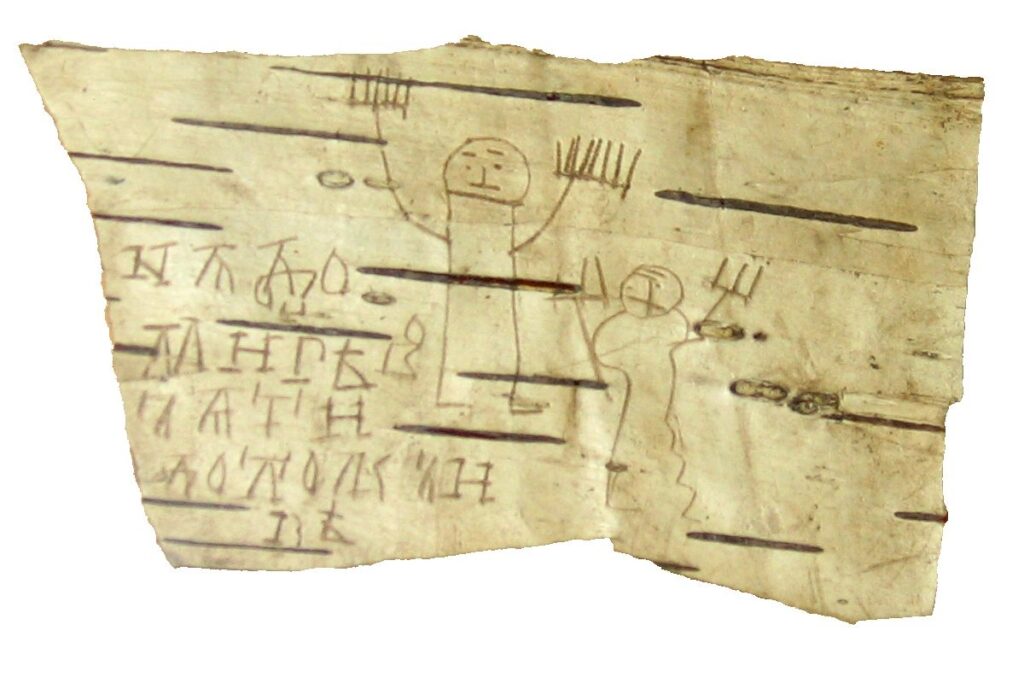Fifty years ago, a trove of manuscripts written on birch bark was discovered in the Russian city of Novgorod, situated some 200 kilometers south of Saint Petersburg. Birch bark was frequently used in the old days as a replacement for paper, which was—until a few centuries ago—a valuable commodity. Birch trees were widely available and could be easily cultivated. In fact, Novgorod is surrounded by birch forests, whose bark was used for centuries by the locals for writing since it was soft and easily scratched. Thin pieces of birch bark were almost as good as wood-pulp paper, while requiring nothing to manufacture.
Table of Contents
ToggleHistorical Significance
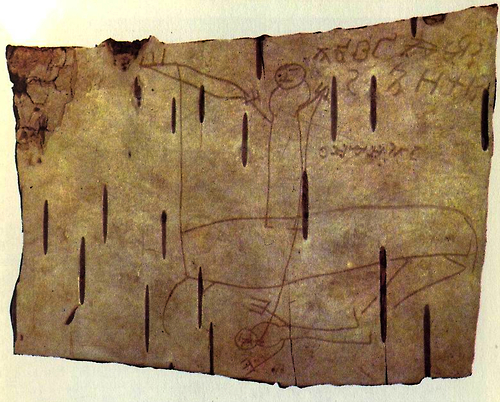
The manuscripts discovered in Novgorod belong to a period between the 11th and the 15th centuries. They include personal letters, documents containing business transactions, legal disputes, shopping lists, school exercises, tax returns, wills, marriage proposals, prayers, spells, curses—you name it. These documents tell a lot about how life was in medieval Novgorod. Among this fascinating find is a charming collection of drawings made by a boy named Onfim.
The Drawings of Onfim
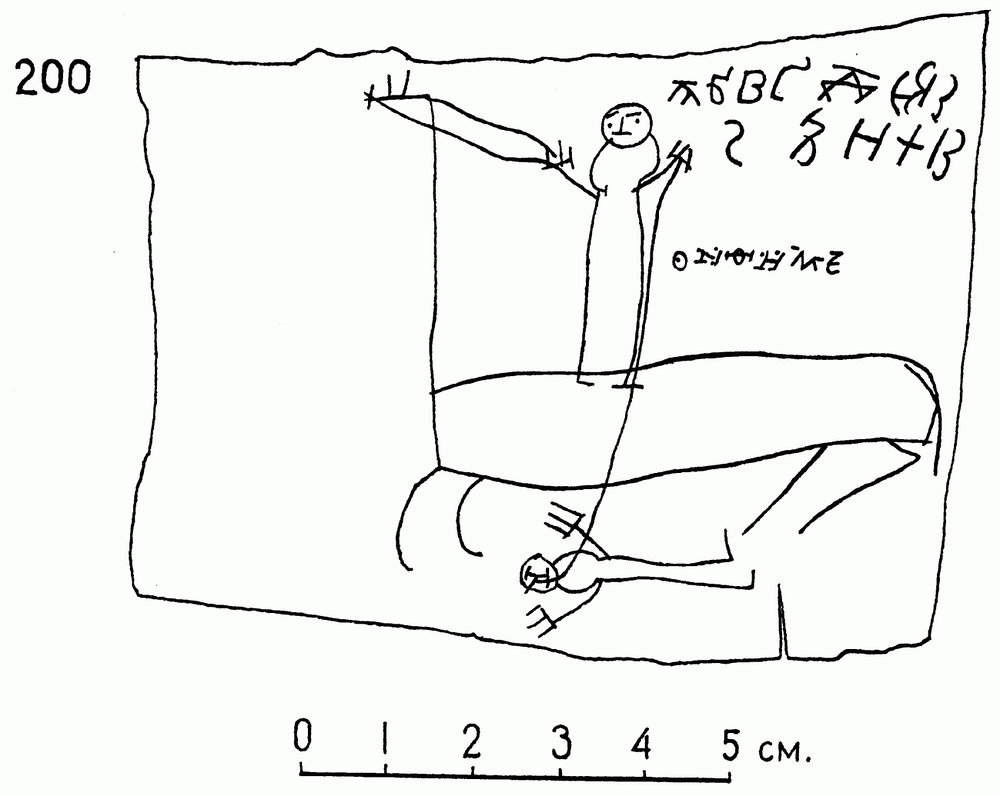
Onfim lived in the middle of the thirteenth century. From his writings and drawings, archeologists estimate that he must have been around six or seven years of age at the time these drawings were made. Onfim was supposed to be doing his homework, which included writing out the alphabet, repeating syllables, and writing psalms. But very often, Onfim got distracted and doodled on the pages.
Onfim’s Creative Side
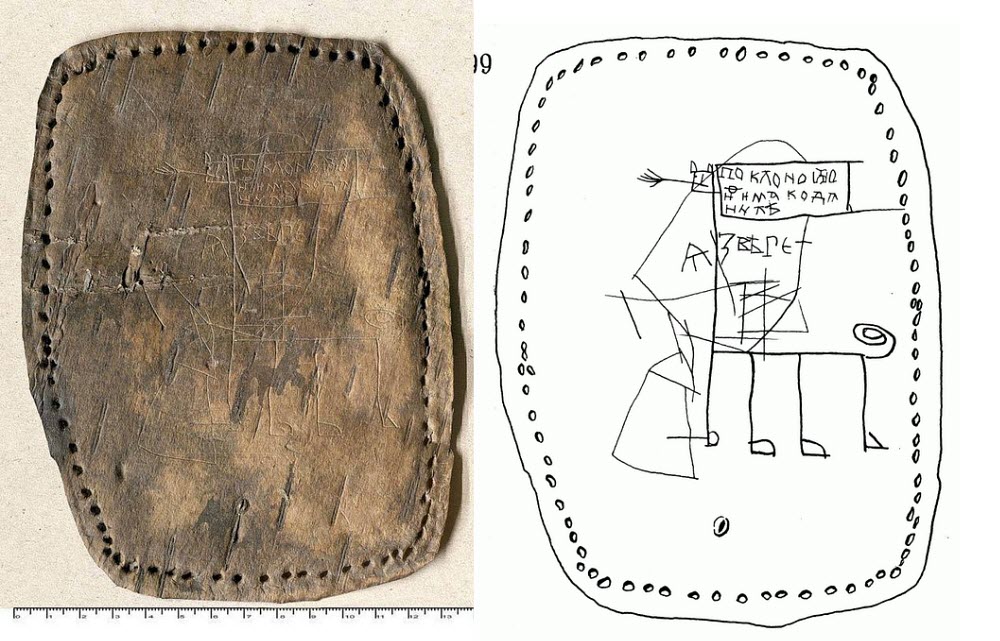
In one example, Onfim was copying the letters of the alphabet in the corner of the page, but then he got bored and drew a picture of himself as a warrior on horseback, sword in one hand and impaling an enemy with a spear in the other. In another example, Onfim flipped a piece of bark that was originally the bottom of a basket and drew a picture of himself disguised as a wild beast. He identified himself by writing “I am a wild beast”. It’s hard to make out, but the beast has a long neck, pointy ears, and a curly tail. It is spewing fire from its mouth. The beast appears to be carrying a sign that says “Greetings from Onfim to Danilo.” It is assumed Danilo is a friend or a schoolmate.
Other Themes in Onfim’s Art
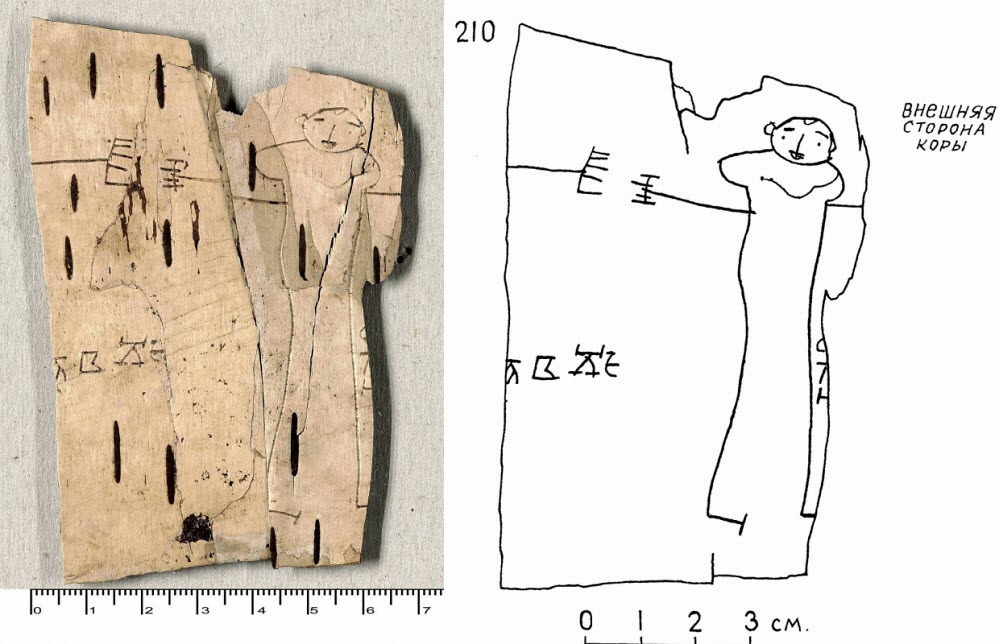
Men, horses, weapons, and mythical beasts aren’t the only themes Onfim liked to draw. He also drew people. In one instance, Onfim started out copying a passage of scripture, but after only a few words couldn’t resist drawing an impressive army of pitchfork-handed men. Another fantasy scene depicts a messy figure of a man and another figure mounted on what appears to be a horse. The text at the top says, “Lord, help your servant Onfim!”
Insights into Medieval Education
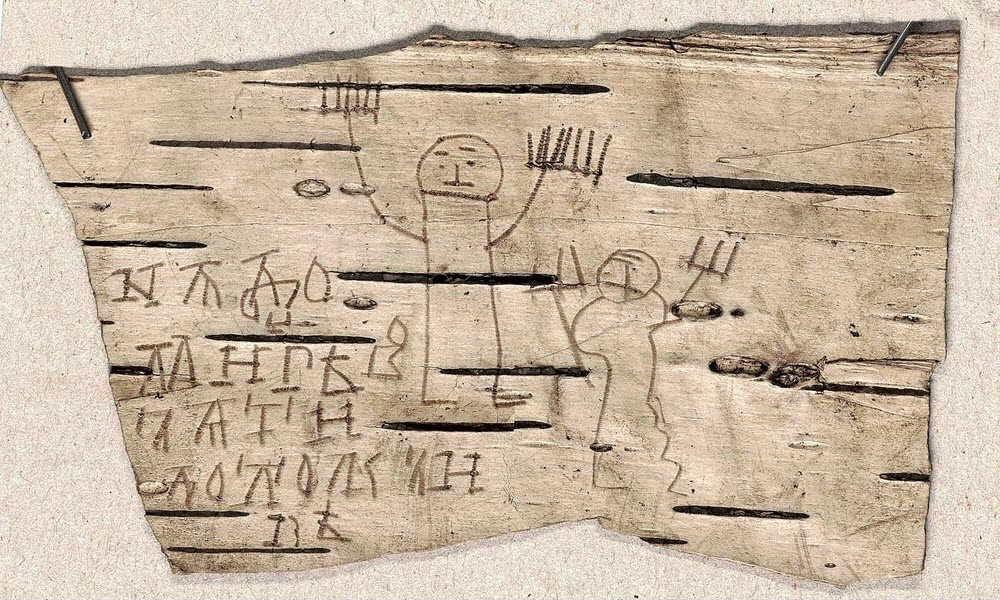
Onfim’s homework gives us a good idea of how education worked in 13th century Novgorod, and surprisingly, not much has changed in the last 800 years. Children practiced the alphabet, spelled out syllables, reproduced well-known texts, in particular, the Psalms, and practiced writing letters. Novgorod had a pretty literate population at that time. The huge amount of birch-bark letters attest to the mass literacy of the population. Indeed, Novgorod, along with Kiev, were the first Russian cities to have formal schools. Consequently, Novgorod became an important center of Russian culture, disseminating religious knowledge and translations of foreign authors. The rich cultural diversity of the people of medieval Novgorod is reflected in these birch bark documents.
Everyday Life in Medieval Novgorod

Among these scrolls is a note from a father to his son that was a routine shopping list that could have been easily written yesterday. It said, “Send me a shirt, towel, trousers, reins, and, for my sister, send fabric.” The note ended with a bit of humor: “If I am alive, I will pay for it.” Another note written by a man named Mikita to a woman named Anna in a birch-bark letter dated to between 1280 and 1300 said: “Marry me. I want you, and you me.”
Continued Discoveries
More than a thousand such notes were miraculously preserved in Novgorod’s oxygen-deficient soil. They continue to turn out during excavations and at construction sites to this day. “The people of ancient Novgorod are talking to us through these scrolls,” said Sergei Yazikov, who led a dig on Bolshaya Moskovskaya Street where many birch writings were found in 2014
